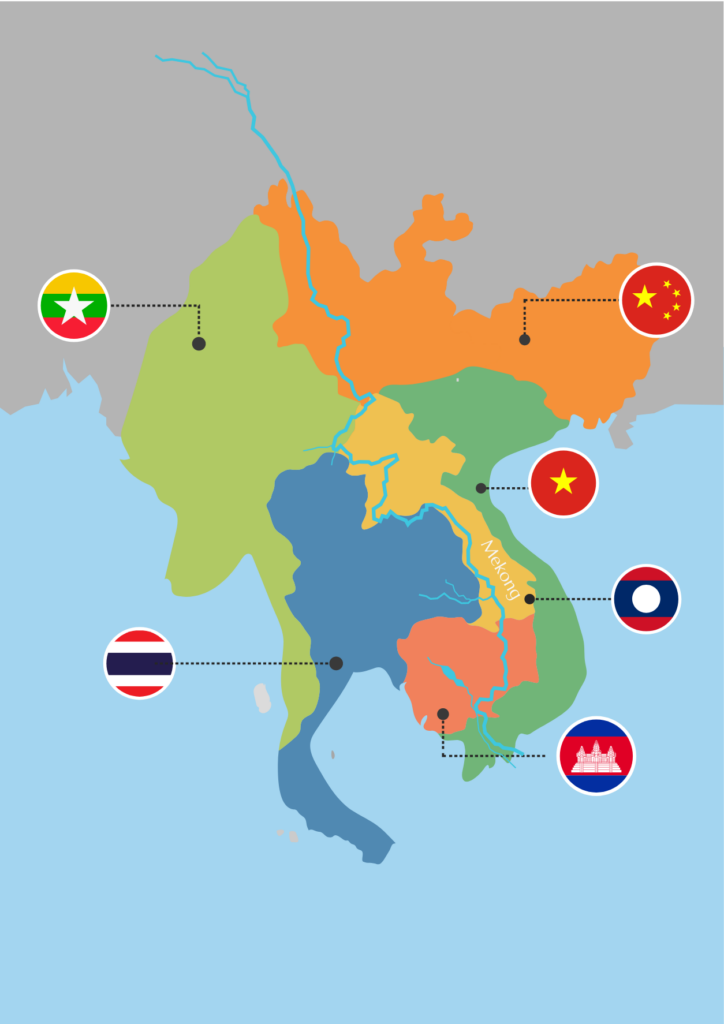MEKONG TOURISM
COORDINATING OFFICE
Vang Vieng, Lao PDR

About the Mekong Tourism Coordinating Office (MTCO)
The Mekong Tourism Coordinating Office (MTCO) started operations in 2006. It came out of the Phnom Penh Declaration on Mekong Tourism following the 16th meeting of the GMS Tourism Working Group (TWG) and is composed of senior officials from the National Tourism Organizations (NTOs) of the six GMS countries. MTCO activities are also supported by the Asian Development Bank (ADB).
Over the years, the MTCO has continuously evolved and strengthened its fundamental role in fostering and facilitating effective collaboration among the GMS governments, development partners, public enterprises, NGOs, private sector, academic institutions, and the media on the implementation of the GMS Tourism Sector Strategy (TSS)
At present, MTCO serves as the secretariat for the GMS TWG to lead the development and promotion of the GMS as a single tourism destination in collaboration with the public and private sectors. It also coordinates project development and implementation under the GMS TSS and facilitates tourism knowledge production, centralization, and dissemination.
The office of MTCO is hosted by the Department of Tourism under the Ministry of Tourism and Sports of Thailand in Bangkok.
Get the latest stories and insights about travel and tourism in the Mekong Region. Use hashtag #TourismMekong
Engage with us on social media at:

About the Greater Mekong Subregion Economic Cooperation Program
- Cambodia
- China (Guangxi and Yunnan Provinces)
- Lao PDR
- Myanmar
- Thailand
- Viet Nam
Uniting them all: the iconic Mekong River, a 4,900km waterway that has played a major role in each of our member countries’ history, economy, and culture.
The Greater Mekong Subregion (GMS) Economic Cooperation Program (the GMS Program) was initiated in 1992. The aim then, as it remains today, was to foster economic growth and reduce poverty in the subregion by strengthening economic linkages among the six member countries.
Cooperation within the framework of the GMS Program covers ten sectors:
- Transport
- Trade Facilitation
- Energy
- Agriculture
- Environment
- Human Resource Development
- Urban Development
- Tourism
- Information and Communications Technology
- Other Multisector and Border Economic Zones
The GMS Program adopted a three-pronged strategy, called the 3Cs, to achieve its vision of a prosperous, integrated, and harmonious subregion. These are: (i) increasing connectivity; (ii) improving competitiveness; and (iii) building a greater sense of community.
The Program’s implementation is guided by the Greater Mekong Subregion (GMS) Economic Cooperation Program Strategic Framework 2030 (GMS-2030), a policy document that aims to provide a holistic response to existing and new challenges.
In response to recent challenges – including the COVID-19 pandemic and weakening global trade – GMS-2030 will focus on the long-term implications for GMS economies through 2030, providing a framework for the subregion to act collectively in its response to seven long-term, powerful local trends:
- Risk of pandemics;
- Weaker global growth and the threat to free trade;
- Persistent pockets of poverty and increasing in-country inequality;
- Severe environmental challenges and threats from climate change, disaster events, and pollution;
- Technological change and digitalization;
- Evolving demographics; and rapid urbanization.
GMS-2030 provides a robust subregional response to these developments, which would be onerous to tackle on an individual country basis.
